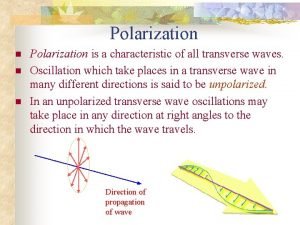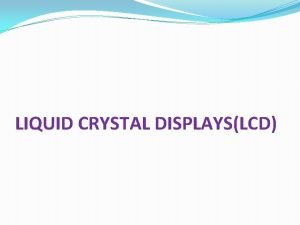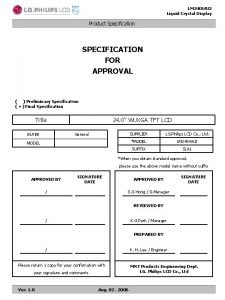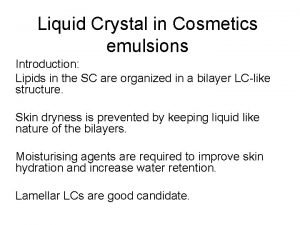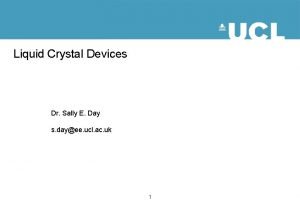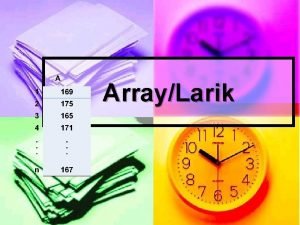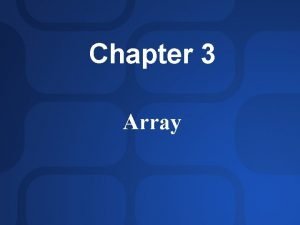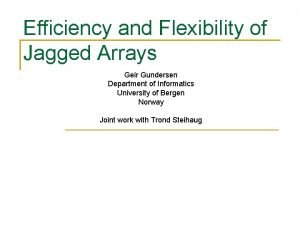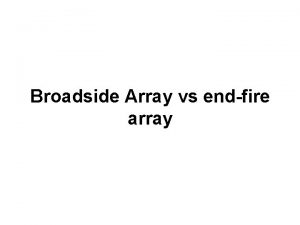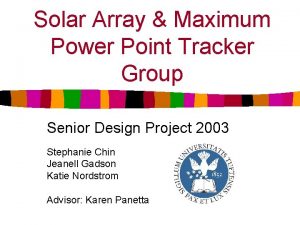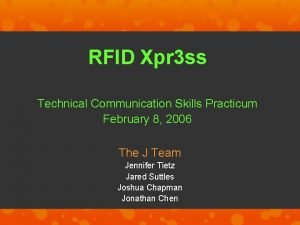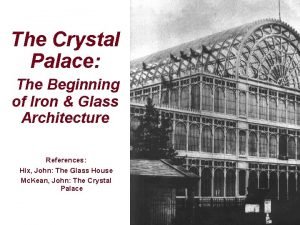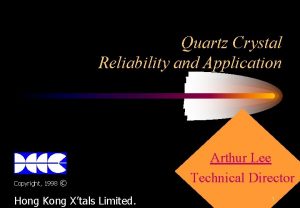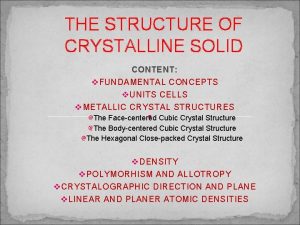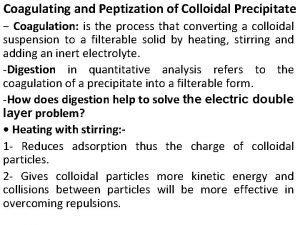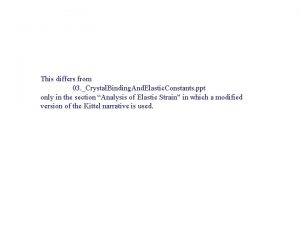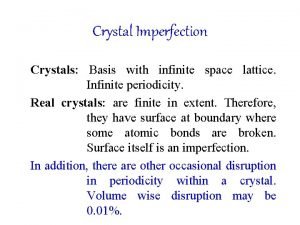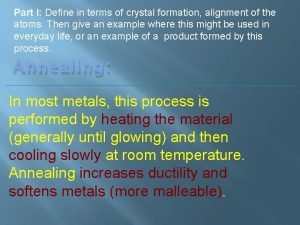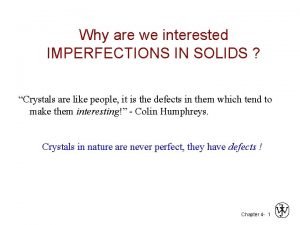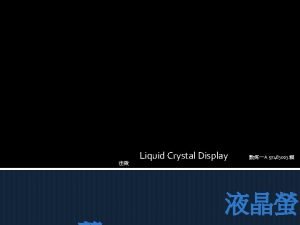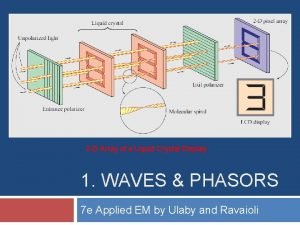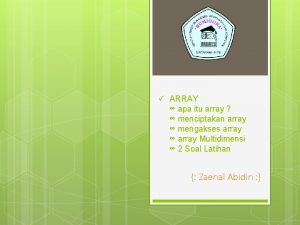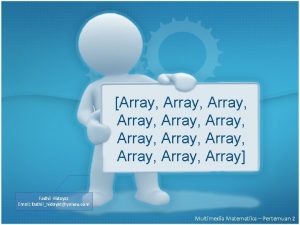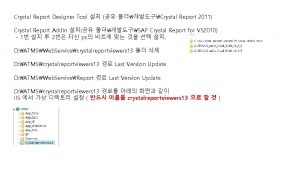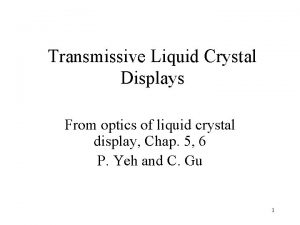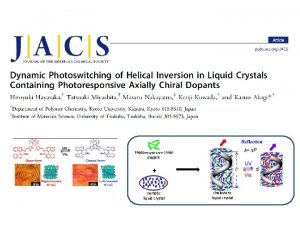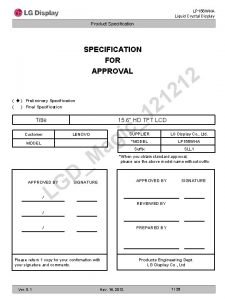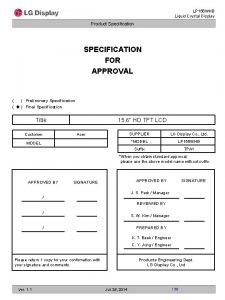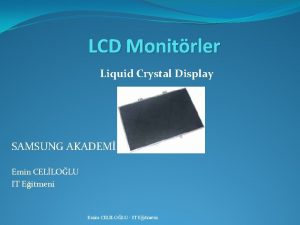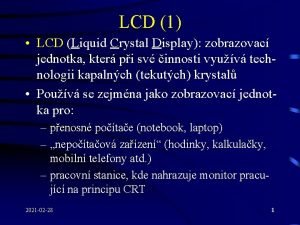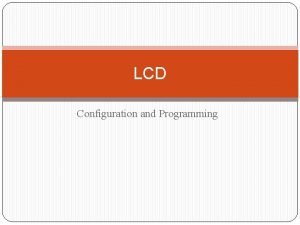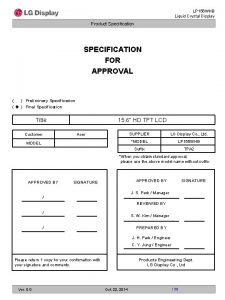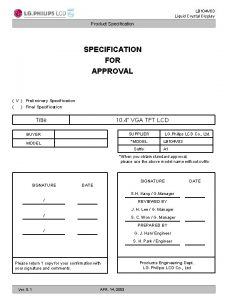2 D Array of a Liquid Crystal Display
































- Slides: 32

2 -D Array of a Liquid Crystal Display 1. WAVES & PHASORS Applied EM by Ulaby, Michielssen and Ravaioli

Chapter 1 Overview

Examples of EM Applications

Dimensions and Units

Material Properties

Traveling Waves carry energy Waves have velocity Many waves are linear: they do not affect the passage of other waves; they can pass right through them Transient waves: caused by sudden disturbance Continuous periodic waves: repetitive source

Types of Waves

Sinusoidal Signal What would be the Phasor of this signal? Phasor -> Time Domain This is why we need to know complex numbers!

Impedance of Capacitor and Inductor This is another reason we need to know complex numbers!

Sinusoidal Waves in Lossless Media y = height of water surface x = distance https: //www. e-

Phase velocity If we select a fixed height y 0 and follow its progress, then =

Wave Frequency and Period

Direction of Wave Travel Wave travelling in +x direction Wave travelling in ‒x direction +x direction: if coefficients of t and x have opposite signs ‒x direction: if coefficients of t and x have same sign (both positive or both negative)

Phase Lead & Lag

Wave Travel in Lossy Media Attenuation factor

The EM Spectrum

Complex Numbers We will find it is useful to represent sinusoids as complex numbers Rectangular coordinates Polar coordinates Relations based on Euler’s Identity


Relations for Complex Numbers Learn how to perform these with your calculator/comput er



Phasor Domain 1. The phasor-analysis technique transforms equations from the time domain to the phasor domain. 2. Integro-differential equations get converted into linear equations with no sinusoidal functions. 3. After solving for the desired variable--such as a particular voltage or current-- in the phasor domain, conversion back to the time domain provides the same solution that would have been obtained had the original integro-differential equations been solved entirely in

Phasor Domain Phasor counterpart of

Marie Cornu in 1880 Paris Time and Phasor Domain It is much easier to deal with exponentials in the phasor domain than sinusoidal relations in the time domain Just need to track magnitude/phase, knowing that everything is at

Phasor Relation for Resistors Current through resistor Time domain Time Domain Frequency Domain Phasor Domain

Phasor Relation for Inductors Time domain Phasor Domain Time Domain

Phasor Relation for Capacitors Time domain Time Domain Phasor Domain

ac Phasor Analysis: General Procedure

Example 1 -4: RL Circuit Cont.

Example 1 -4: RL Circuit cont.


 Liquid crystal display
Liquid crystal display Dynamic scattering type lcd
Dynamic scattering type lcd Application of liquid crystal
Application of liquid crystal Liquid crystal
Liquid crystal Liquid crystal cosmetics
Liquid crystal cosmetics Liquid crystal
Liquid crystal Liquid crystal.h
Liquid crystal.h Cathode ray tube in computer graphics
Cathode ray tube in computer graphics Kahoot pin
Kahoot pin In raster scan display the frame buffer holds
In raster scan display the frame buffer holds Theories of breakdown in liquid dielectrics
Theories of breakdown in liquid dielectrics Liquid liquid extraction diagram
Liquid liquid extraction diagram Pin grid array
Pin grid array Apa itu larik
Apa itu larik Array dimensi banyak
Array dimensi banyak Keuntungan dari sparse array adalah:
Keuntungan dari sparse array adalah: Associative array vs indexed array
Associative array vs indexed array Jagged array vs multidimensional array
Jagged array vs multidimensional array Perbedaan array 1 dimensi dengan array 2 dimensi
Perbedaan array 1 dimensi dengan array 2 dimensi Endfire array
Endfire array Photovoltaic array maximum power point tracking array
Photovoltaic array maximum power point tracking array Cfah2004k-tmi-jp
Cfah2004k-tmi-jp Crystal reports 7
Crystal reports 7 Crystal palace
Crystal palace Crystal drive level
Crystal drive level Metodologia crystal clear
Metodologia crystal clear Crystal system
Crystal system Peptization
Peptization Mit ice cream
Mit ice cream Crystal binding and elastic constants
Crystal binding and elastic constants Crystal imperfection
Crystal imperfection Formation crystal report
Formation crystal report Crystal defects
Crystal defects
